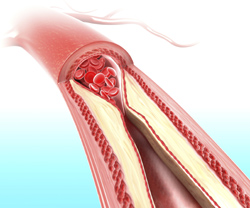Targeting atherosclerosis
The main cause of cardiovascular disease is the formation of atherosclerotic plaques on vascular walls. Emerging data challenges the current belief that atherosclerosis is a lipid storage disease, and incriminates inflammation in its pathophysiology. However, our understanding of the mechanisms that link inflammation with atherosclerosis development is limited. With EU funding, the 'European Collaborative Project on inflamation and vascular wall remodelling in atherosclerosis' (ATHEROREMO)(opens in new window) project investigated the role of inflammatory remodelling in atherosclerosis development. The project combined clinical studies with genomics and lipidomics high-throughput analyses, and basic research, thereby hoping to unveil novel molecular targets that could be exploited in diagnostics and treatment. Alarmingly, researchers found a strong association between cardiovascular disease and dental infections as well as root canal treatment. Genomic analysis revealed that this was due to streptococcal bacteria. With respect to the molecular mechanisms responsible for vascular wall remodelling, the consortium identified novel immune signalling events such as pattern recognition receptors and chemokines. They found that reduction of the chemokine levels prevented atherosclerosis, thereby indicating that preventing unwanted inflammation could serve as a therapeutic strategy. Alternative treatment strategies could entail the reversal of the gene expression changes in the arterial wall induced by atherosclerosis. From a diagnostics perspective, the ATHEROREMO study identified novel imaging and lipidomic biomarkers that have a true potential to change current clinical risk evaluation strategies for patients. In addition, the levels of circulating ceramides were found to outperform cholesterol measurement with respect to identifying people at risk of cardiovascular disease. These observations also led to the development of new diagnostic kits. Overall, the activities of the ATHEROREMO project greatly advance our understanding of the inflammatory events and mechanisms that lead to atherosclerosis and cardiovascular disease. In the long run, project findings are expected to improve the prognosis and diagnosis of high-risk individuals, as well as provide novel therapeutic modalities.







